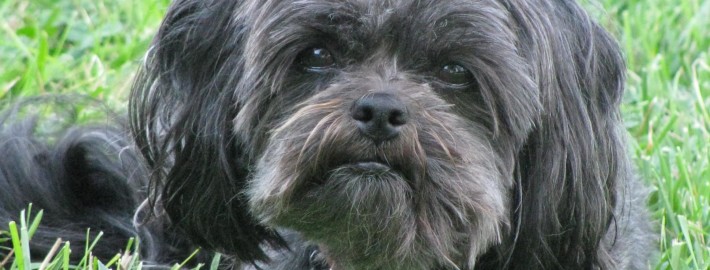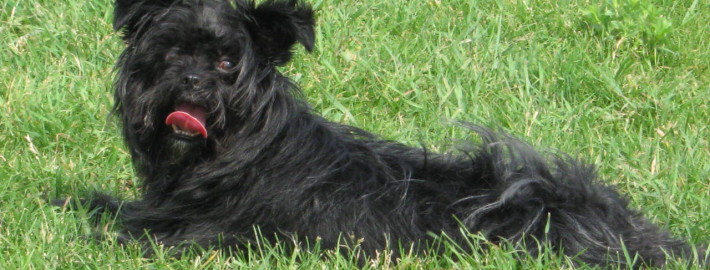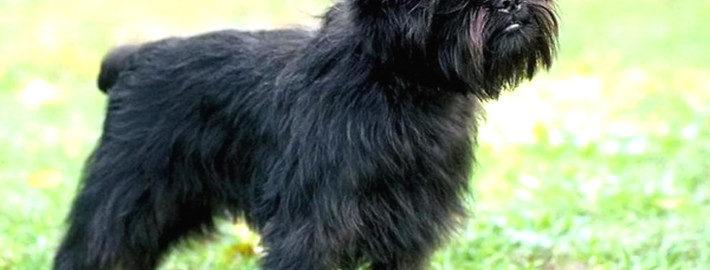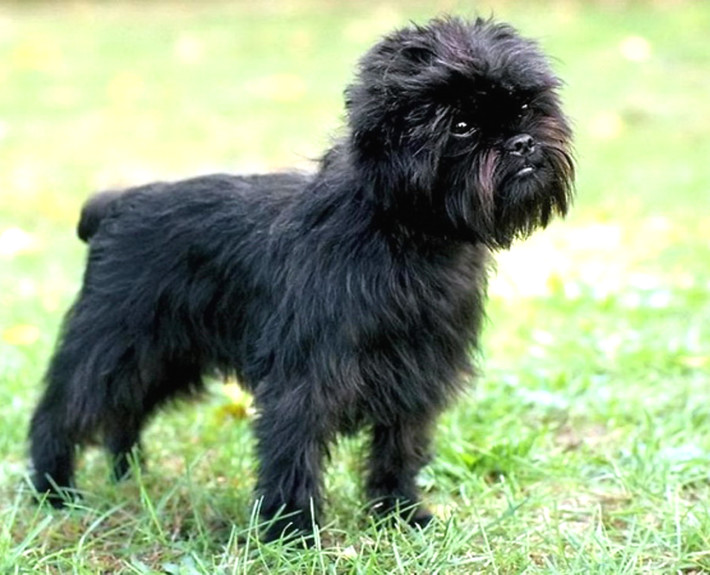What makes the Affenpinscher Unique?
The affenpinscher is square-proportioned, compact and sturdy, with medium bone. It is a smaller version of a working terrier, and as such is not a delicate dog. This is an active, tough dog that is agile enough to catch and dispatch rats and mice. Its gait is light, sound and confident. The affenpinscher has a monkeylike facial expression with long eyebrows and beard, which lends it an air of comic seriousness. This breed’s rough coat is about 1 inch long on its body and somewhat longer on its head, neck, chest, stomach and legs. The coat type provided protection from vermin and harsh conditions. The affenpinscher lives up to its name — “monkey terrier” — in both looks and actions. A terrier at heart, it is busy, inquisitive, bold and stubborn, but it also loves to monkey around, being playful and mischievous. It tends to bark and even climb. Unlike most terriers, it is fairly good with other dogs and pets. This little dog is best with a family that likes entertainment and has a very good sense of humor.
Breed Groups
Page Contents
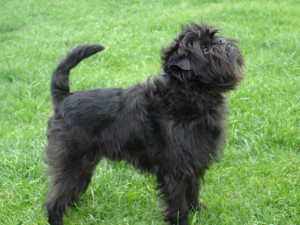
SnapShot
| Size: | Males – 23 to 30 cm (9 to 12 inches) Females – 23 to 30 cm (9 to 12 inches) |
| Weight: | Males – 2.9 to 6.0 kg (6.5 to 13.2 lb) Females – 2.9 to 6.0 kg (6.5 to 13.2 lb) |
| Origin: | Germany |
| Life Span: | 10 – 12 Years |
| Colour: | Black, grey, silver, red, black and tan, or belge (mixed black, white, brown and red hairs), all with or without black mask |
| Litter Size: | 2 to 3 puppies |
Is the Affenpinscher Right For You?
Although an energetic and active dog, the exercise needs of the affenpinscher can be met with vigorous indoor games or romps in the yard, or with short walks on leash. It enjoys playing outside, but it cannot live outdoors. Its harsh coat needs combing two or three times weekly, plus shaping every three months. Shaping for pets is by clipping, whereas show dogs require stripping.
In 5 Words
- Careless
- Fearless
- Bold
- Inquisitive
- Stubborn
Characteristics
Learn About the Affenpinscher
Description
The Affenpinscher is a shaggy and a small dog, wiry-type coat. The hair on the face is longer than the rest of the body giving it a definite look. It is a working terrier a smaller version and is not a delicate dog. It has a square-body, deep chest with a moderately broad. The head is round with a pronounced stop, which is the transition area from the backskull to the muzzle. Broad enough for the lower teeth to be straight and even, the lower jaw is undershot, protruding below the dog’s short nose. Round eyes are black, the prominent. The arched and the limbs are straight and well boned and the neck is short. The tail is carried high and docked to two-thirds its length. However some countries have banned docking of animal’s tails and ears, the hairy ears are customarily docked, pointed and erect. The coat is usually black or dark gray, but can also come in , silver, lighter gray, red, or tan and black . Slightly curly the undercoat.
Short History of the Affenpinscher
Although dogs be similar to the Affenpinscher are noted as far back as the 15th and 16th Century in artwork from those times and in the late 17th century, these types of dogs were first named by the German name of “Zwergaffenpinscher”.
Literally translated:
“zwerg” meaning “miniature” or “little”
“affen” meaning “monkey”
and “pinscher” meaning “dog”
Temperament
General demeanor is game, alert, and affection toward its master and friends and inquisitive with great loyalty . The breed is generally quiet, but can become uncontrollably excited when threatened or attacked, and is unafraid toward any aggressor.
Caring for Your Affenpinscher
General Health
- Heart Problems: Diseases and disorders that dog’s heart affect
- Cataracts: Refers to any darkness of the lens of the eye. Dogs can develop cataracts of either gender
- Hip Dysplasia: Degeneration of the coxofemoral (hip) joint or involves abnormal development
- Hernias
- Hypothyroidism: Release of the thyroid hormones triiodothyronine (T3) and thyroxine (T4) and a clinical syndrome caused by inadequate production
- Legg-Calve-Perthes Disease: defined as the spontaneous degeneration of the hip (coxofemoral) joint
- Patellar Luxation: Patellar luxation, occurs when the patella is displaced from the joint commonly known as a “slipped knee cap,” .
- Oligodontia (congenital absence of some teeth)
- portosystemic shunts
- Sebaceous cysts
- Von Willebrand Disease: In Domestic dogs the most common are hereditary blood-clotting disorder.
Grooming & Bathing
The Affenpinscher dog breed does not need much grooming. Because of its hard terrier-like coat, it doesn’t become easily matted or tangled. Weekly brushing and a combing out of the fur on the legs and head will maintain the Affenpinscher’s typical scruffy appearance. There is some shedding of the undercoat, but the weekly maintenance will control this.
The Affenpinscher’s head and facial hair can become sticky depending on the consistency of food. Regular cleaning of the dog’s face with a damp wash cloth and a comb after eating will prevent a messy mustache and beard.
Exercise & Training
Luckily affenpinschers don’t need a lot of exercise. They will be just as happy with a run in the garden as a hike up a Munroe. Again in common with all toy breeds they should not be walked excessively until they are at least 6 months old. After they are 6 months old, the Affenpinscher needs enough exercise to get rid of its excess energy. There has been an increased interest in agility activities for the breed. The first Affenpinscher took part in an official agility race in Finland in spring of 2007. The owners of Affenpinschers have actively taken part in dog shows.

